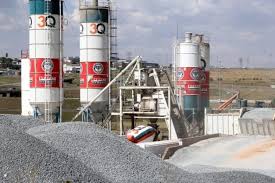Gold sector keeps focus on milestone
ZIMBABWE’S gold mining sector which is supposed to contribute US$4 billion towards the US$12 billion mining milestone by the end of this year, continues to increase output.
Official figures already indicate that gold production increased by 21 percent to 2 875 tonnes in May this year from 2 376 tonnes in April. Gold is Zimbabwe’s single largest export earner and the sector employs thousands of people involved in small-scale artisanal mining or employed by big mines.
In October 2019, the Government launched the US$12 billion mining industry roadmap and the gold sub-sector is expected to contribute US$4 billion.
Government has since then been working on a number of programmes to boost gold output as well as attract new investors to the sector. There is also a programme to expand operations, revive or open closed mines as well as provide incentives to gold miners.
Last year, Zimbabwe’s gold output reached a record high of 35,3 tonnes and this year the mining sector targets 40 tonnes.
Statistics from Fidelity Gold Refinery (FGR), the country’s sole authorised buyer of gold, show that May had the highest gold deliveries this year.
In February gold deliveries were somewhat stagnant at 1,895 tonnes before improving to 2,403 tonnes in March and declining to 2,376 tonnes in April 2023.
Last month’s improvement in gold production is attributed to de-watering initiatives that have improved accessibility to the mines by small-scale miners who traditionally contribute the bulk of the yellow metal.
The small-scale mining industry does not have sophisticated mining equipment and machinery to de-water the shafts making it difficult for the small-scale miners to carry out their operations during the rainy season.
Although gold production in May improved, the output of the yellow metal for the first five months of the year was marginally lower at 11,4 tonnes compared to 13,1 tonnes in the corresponding period last year.
Contacted for comment, Mines and Mining Development Parliamentary Portfolio Committee chairperson, Mr Edmond Mkaratigwa, said seasonal shifts were negatively impacting production of gold.
“The rainfall patterns equally determine productivity as miners conducting underground mining will have to consider their safety first. Thus, in May, miners will largely be back to real business and full-scale production,” he said.
In the first five months to May this year, small-scale miners delivered seven tonnes of the yellow metal compared to 8,5 tonnes delivered during the same period last year.
During the same period, large-scale miners delivered 4,4 tonnes compared to 4,6 tonnes last year.
Mr Mkaratigwa said the ministry will give an update on the US$12 billion mining sector achievement. — chronicle











